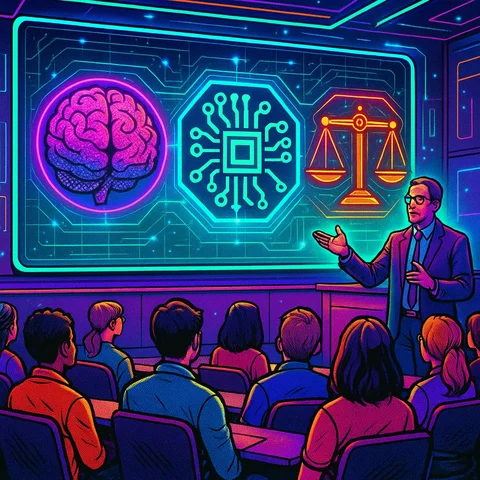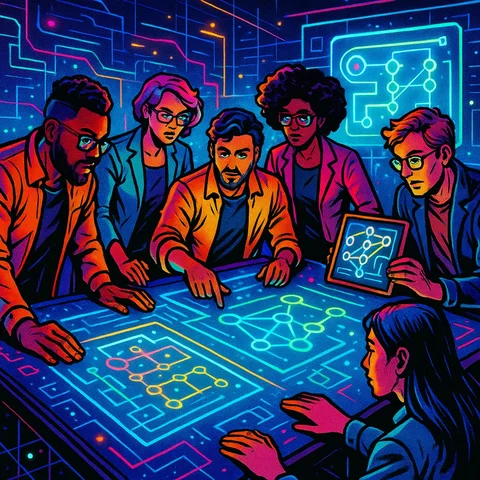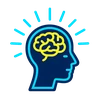The Role of Interdisciplinary Collaboration in Shaping Reliable AI Agents
Explore how interdisciplinary teamwork enhances the development of reliable AI agents, combining expertise from various fields for better AI solutions.

The Role of Interdisciplinary Collaboration in Shaping Reliable AI Agents
Introduction to AI Agents and Their Importance
In recent years, AI agents—autonomous systems designed to perceive, reason, and act—have moved from academic research into the heart of digital innovation. From customer service chatbots to advanced scientific assistants, AI agents are transforming how businesses and individuals interact with technology. Yet, as their capabilities grow, so do the challenges: ensuring these agents are reliable, robust, and ethically aligned is now a top priority in artificial intelligence development.
Recent industry events, such as Google's unveiling of advanced digital assistants powered by the A2A protocol, highlight the accelerating hype around AI agents. However, as discussed in MIT Technology Review’s “Don’t let hype about AI agents get ahead of reality”, expectations must be tempered with a focus on responsible deployment, clear definitions, and structured architectures to ensure reliability—especially in enterprise contexts.
Understanding AI Agents: Functions and Applications
AI agents are software entities that perform tasks on behalf of humans, operating autonomously or in collaboration with other agents and systems. Key applications include:
- Virtual assistants (e.g., scheduling, customer support)
- Scientific discovery (e.g., AI-driven experiment planning)
- Healthcare diagnostics
- Enterprise automation
Their design often integrates machine learning, symbolic reasoning, and domain-specific knowledge, making them versatile yet complex to manage.

The Need for Interdisciplinary Approaches in AI Development
Why Collaboration Across Fields Matters
Despite the promise of AI agents, their development faces a critical bottleneck: thematic diversity in AI research has stagnated. According to an OECD report (Klinger et al., 2020), leading tech companies tend to focus on a narrower set of cutting-edge methods than universities, potentially limiting innovation and robustness [source].
To build reliable AI systems capable of operating safely in real-world environments, AI research teams must embrace interdisciplinary collaboration. By combining expertise from computer science, neuroscience, ethics, psychology, and other fields, teams can address the technical, ethical, and societal challenges inherent in AI agent design.
Key Disciplines Contributing to AI Agent Reliability
Integrating Insights from Computer Science, Ethics, and Psychology
The most reliable AI agents are products of multi-disciplinary approaches, where different fields contribute distinct strengths:
- Computer Science: Provides the core algorithms, architectures, and software engineering required for AI agent design.
- Neuroscience & Biology: Inspires neural network structures and learning mechanisms—modern neural architectures often mimic cortical neurons or evolutionary processes [source].
- Psychology & Cognitive Science: Informs models of reasoning, memory, and perception, enhancing the agent’s ability to interact naturally with humans.
- Ethics & Law: Ensures AI safety and ethics, embedding transparency, auditability, and compliance with societal norms into AI objectives [source].
For example, embedding ethical constraints directly into algorithmic objectives has been proposed as a way to enforce regulatory compliance and increase accountability [source].
Case Studies of Successful Collaborative AI Projects
Real-World Examples of Collaborative AI Success
A landmark achievement that demonstrated the power of cross-disciplinary innovation. AlphaGo combined deep reinforcement learning (computer science) with classical tree search (game theory) to defeat a world Go champion, a feat long thought unattainable for machines [source].
This large-scale collaborative program brings together astrophysicists, computer scientists, and engineers to apply AI to space science. The result: AI-powered tools that process massive sensor datasets and plan complex experiments—outcomes unattainable by single-discipline teams [source].

The widespread adoption of platforms like Google’s TensorFlow and Facebook’s PyTorch has transformed AI development. These frameworks enable code and model sharing across academia and industry, catalyzing innovation and promoting best practices in collaborative AI projects [source].
Interdisciplinary AI teams have accelerated drug discovery and enabled early disease detection, demonstrating that multi-disciplinary collaboration yields statistically significant improvements in speed and accuracy [source].
Challenges and Opportunities in Interdisciplinary AI Development
Overcoming Barriers to Interdisciplinary Work
Despite clear benefits, interdisciplinary collaboration faces hurdles:
- Communication gaps: Different fields have unique terminologies and methodologies.
- Data silos: Access and interoperability can be limited across domains or organizations.
- Incentive misalignment: Entities may prioritize proprietary gains over open collaboration.
The A2A protocol, for instance, aims to enable agent-to-agent communication, but struggles with defining shared semantics and aligning incentives between agents from different providers—a challenge


